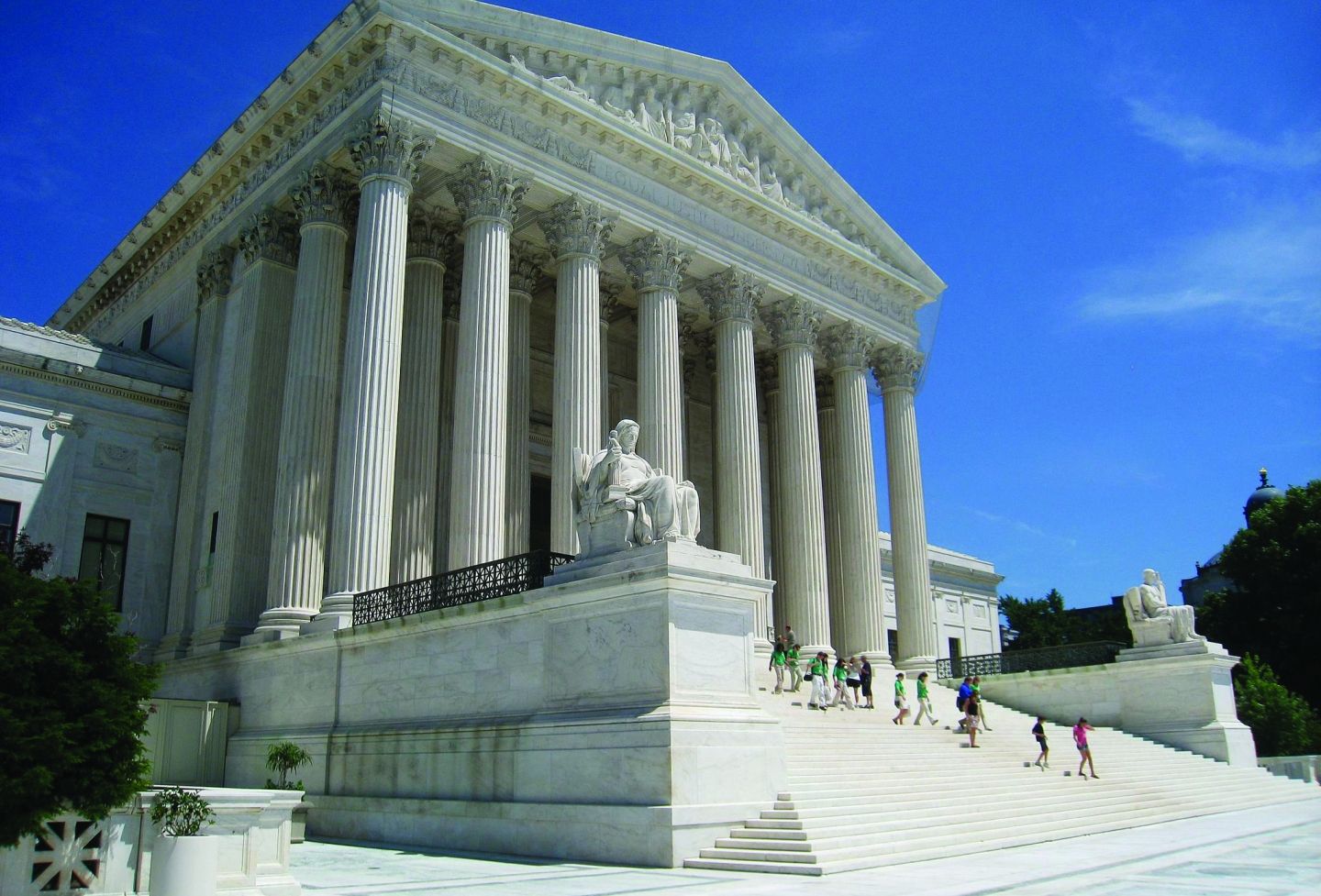Articles in the Virginia Law Weekly offer readers the scoop on a microcosmic community: that of a law student. Accumulated over 70 years, they create a powerful narrative of academic and social life.
The hours required are “whatever it takes” — and in terms of career prospects, some might argue, better spent on an academic journal. The promise of a byline and the satisfaction of a well-told story are often the only guarantees of reward.
And yet, “There had always been a journalist hiding inside of me,” said Virginia Dunmire ’79. “So, early in my first year, I wandered into the Law Weekly office.”
She is just one of countless student journos over the past seven decades who have heeded the call.
“Willing hands were always needed, so there was no formal acceptance to the staff,” said Dunmire, who served during the 1978-79 academic year and was the weekly’s first female editor-in-chief. “I would spend many enjoyable hours there.”
The award-winning Law Weekly has captured some of the most important moments in the Law School’s history, debated the issues of the times and, occasionally, made news of its own.
Always, it has done so with its own unique style and humor.
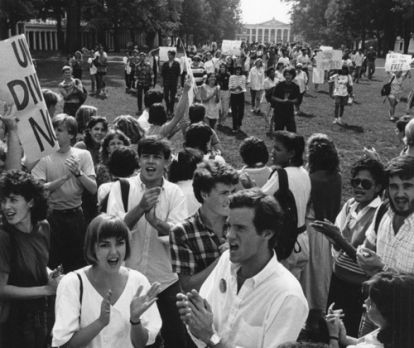
Students protested and petitioned to change South Africa's policy of apartheid in 1985.
Launch and Early Years
The first issue of the Virginia Law Weekly was published May 27, 1948. The reported circulation of 4,700 included alumni and others in the legal profession, in addition to members of the Law School community and local readers.
A front-page article headlined “Birthday …” introduced the Law Weekly and stated its aim to be a forum for the community that would further the best interests of the Law School.
The founding issue also featured the first “DICTA” column on the front page, penned by Dean F.D.G. Ribble ’21. Editors described “DICTA” as “designed to fill an hitherto unfilled gap in the educational process of the law school.”
The four-page first edition — complete with ads for golf shoes, typewriters and tires — also presented an abridged history of the Law School’s founding as part of Thomas Jefferson’s University. In his honor, “a cut of Mr. Jefferson is used on the Law Weekly because he played the chief role in founding this school.”
To this day, Jefferson’s portrait graces the front page.
The newspaper would commence regular weekly publication the following September.
Starting that fall, in a tradition that would continue until the 1970s, Law Weekly staff held an annual banquet as a send-off for graduates. U.S. Supreme Court Justice Felix Frankfurter was the featured speaker and discussed challenges the justices faced, such as managing demanding workloads and tackling lawyers’ ill-prepared oral arguments.
In 1956, the Law Weekly won its first American Bar Association newspaper of the year award.
“One outstanding feature is the ‘DICTA’ column,” the Law Weekly reported regarding the win, “which has been emulated by other law school newspapers throughout the country.”
The Law Weekly’s prestige only grew. For example, all three candidates for the presidency in 1968 submitted pieces written exclusively for the Law Weekly asking for the student vote. Of Richard Nixon, Hubert Humphrey and George Wallace, Humphrey came out on top in a student preference poll.
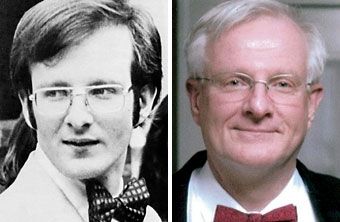
Bill Hackworth ’73
In the Newsroom
Bill Hackworth ’73 served as editor-in-chief for the 1972-73 academic year, which kicked off with the staff taking home a 16th consecutive ABA first-place award for student newspapers. At that time, reporters banged out articles on typewriters. Edited articles would have been hot-waxed to paste-up pages, each piece neatly hemmed in by border tape.
It was a transformative time. The Vietnam War was ending, and at the University, students were seeking social change. Hackworth took Evidence with Larry Gibson, the first black UVA Law professor. The Law School was contemplating its move to North Grounds.
By that time, the Law Weekly was housed in a trailer adjacent to Clark Hall. It boasted a staff of 45 students, including business and advertising staff, and more than 2,500 subscribers.
“I suspect that the mix of serious material, such as the ‘DICTA’ column, along with informative articles about Law School organizations and activities, a good bit of humor, a clean layout and professional printing made the VLW stand out,” Hackworth said. He would go on to become a trial attorney for the U.S. Department of Justice and, later, city attorney for Roanoke, Virginia, before retiring in 2011.
The staff members were talented, but few had newspaper experience.
“We relied heavily on what those at Mr. Jefferson’s University so often do — tradition — and followed the same basic format devised over the previous 25 years,” he said.
Hackworth attributed some of the Law Weekly’s success to a rapport with the Student Legal Forum, which during his years recruited notable speakers to lecture at the Law School, including Vice President Spiro Agnew, Sen. Edward M. Kennedy ’59, U.S. Supreme Court Justice Thurgood Marshall and former Chief Justice Earl Warren.
“Our reporters were able to perform side-by-side with the national media when they covered these speakers,” Hackworth said.
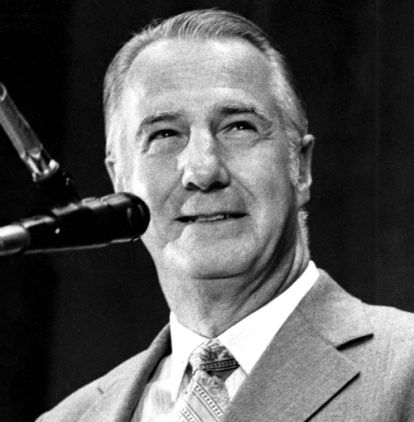
In 1973, the Student Legal Forum hosted Vice President Sprio Agnew, who resigned in disgrace.
Both Hackworth and Dunmire said much of the appeal of working on the newspaper was camaraderie. Dunmire said the work environment felt like friends working toward a common goal, although they rarely gathered as a group, since content trickled in throughout the week.
“I had a feeling of accomplishment — for myself and the staff — every Friday as the lobby was filled with students picking up and reading the Law Weekly,” she said.
Under her leadership, the weekly won ABA awards for reporting and design.
Also during Dunmire’s tenure, Michael Goodman ’80 won the ABA’s 1979 Award for Excellence in Cartooning, in a field of more than 60 entries. At the staff’s final gathering, Goodman presented Dunmire with a cartoon poking fun at her conservative editorial judgment.
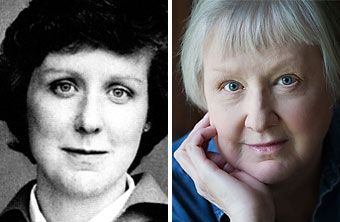
Virginia Dunmire ’79
“For example, I remember squashing a proposal to publish faculty salaries,” she said. “I cannot remember if we thought them too low or too high — I expect the latter.”
Dunmire retired in 2013 as deputy general counsel of Commerce Bancshares in Kansas City, Missouri. She had worked for two law firms in Kansas City before joining the bank’s corporate legal department in 1984.
“I was satisfied and proud to be elected editor-in-chief as a result of my hard work and dedication to the paper,” she said. “It did not even occur to me that I was the ‘first woman.’”
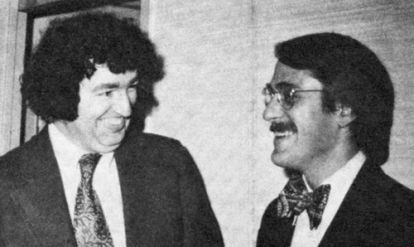
A photo of professors Peter Low and John C. Jeffries Jr. from the DICTA column.
Cited By the Supreme Court
Before the internet and today’s myriad sources of news and commentary, the Virginia Law Weekly offered a forum for scholarly discussion. Professors, though at times skewered by the newspapers’ commentary, were eager to participate.
One DICTA column the Law Weekly published became legal history when it caught the attention of the U.S. Supreme Court.

Virginia Law Weekly front pages from the first issue in 1948, 1960s and '70s.
“Constitutionalizing The Criminal Law?,” by professors John C. Jeffries Jr. ’73 and Peter W. Low ’63 was published March 25, 1977, and was cited in Patterson v. New York that June.
The professors, who had clerked at the Supreme Court earlier in their careers, had turned to the Law Weekly for an immediate outlet to contribute to the legal conversation.
“We needed to get our views in the public domain quickly if they were ever going to come to the attention of the court while it mattered,” Low said, adding that the article was Jeffries’ idea, and “he bore the laboring oar in its execution.”
Patterson, written by Justice Byron White, upheld a New York statute that allowed murder to be reduced to manslaughter if the defendant proved by a preponderance of the evidence that the act was the result of “extreme emotional disturbance for which there was a reasonable explanation or excuse.”
The New York law was a compromise, Low said. It significantly broadened the concept of provocation, which had traditionally reduced murder to manslaughter, in exchange for putting the burden of proof on the defendant. The question was whether such compromises conflicted with the obligation of the prosecutor to prove the elements of a criminal offense beyond a reasonable doubt.
In a footnote citing the DICTA column, the court recognized, as the column had argued, that New York’s law was part of a growing trend. “It was important to then-current law reform efforts for the court to uphold the New York law,” Low said. He added that “Patterson settled the issue for criminal defenses and mitigations, although it resurfaced 23 years later in the context of factors related to sentencing.”
Low retired in 2014 and is now professor emeritus. Jeffries in August became the University’s senior vice president for advancement.

Assistant Professor Gail S. Marshall ‘68 after a court appearance as the defense attorney for the Virginia Law Weekly Associates and 15 people named in a defamation suit brought by members of the Charlottesville Police Department.
Case Dismissed
In addition to its many successes, the Law Weekly faced challenges not unfamiliar to its professional counterparts.
A 1970 interview and commentary piece headlined “Racist Justice in Charlottesville” criticized the arrest of a black resident by Charlottesville police officers. One officer was described as “notorious in the black community for racism and brutality.”
In response, two officers filed a $200,000 defamation suit against Virginia Weekly Associates Inc. and 15 people, seeking $50,000 in compensation and $150,000 in punitive damages. The defendants responded that one officer “has on several occasions made indiscriminate, unreasonable and unnecessary display of weapons in incidents involving black people.”
Assistant Professor Gail Marshall ’68, who then taught contracts, torts and legal philosophy at the Law School, served as pro bono counsel for the Law Weekly in 1971 and sought dismissal. After newspaper staff showed up for depositions and the plaintiffs did not, the case was dropped.
“Back in the day, depositions were not automatic, so getting the court to order them was, in my view, what caused them to abandon the matter,” she said.
Marshall recalled that, as she and newspaper staff members drove away from the courthouse, one of the defendants remarked, “Something very important didn’t happen here today!”
Marshall left teaching and later became recognized for her pro bono efforts in the areas of fair housing, the environment and parolee rights. Today, she runs her own law office in Rapidan, Virginia.
Although the defamation suit may not have been frivolous on its face, “I think they truly thought they could silence this kind of criticism,” she said.
The plaintiffs faced a high bar because as public officials, Marshall explained, the officers would have to prove the newspaper acted with reckless regard, whether the Law Weekly’s accusations were truthful or not.

The Law Weekly ran a series of photos that found professors’ names in unlikely places for an April Fools’ Day issue. The Hotel Alex Johnson is in Rapid City, South Dakota.
Humor Has a Place
Michael Kun ’88 started writing for the student newspaper at Johns Hopkins University as an undergraduate and wrote a humor column, “Ham on Wry,” for most of his time there.
“I had always enjoyed writing that humor column at Hopkins,” Kun said. “At UVA, I knew a few people who were working on VLW, and they asked me if I would be interested in writing a similar humor column, which I was glad to do. It was a nice distraction from studying.”
In addition to the column, he continued to write short stories during his first two years of law school.
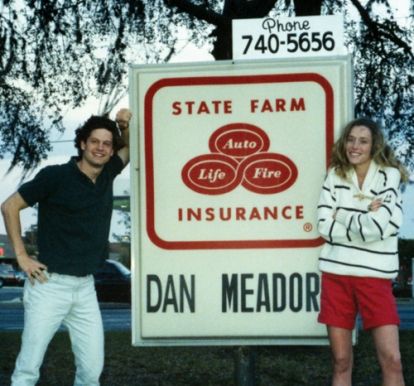
“I would write them in long hand, often in the Law School lounge, head home to type them up, send them off to publications and await the inevitable rejection letters,” said Kun, who works at Epstein Becker & Green in Los Angeles. “I wish I’d kept those rejection letters. They were a good motivator.”
In his second year, however, he sold five or six short stories to different publications within the same month.
Then came his biggest break.
Ahead of his third year, an editor passed along one of Kun’s short stories to a colleague at a New York publishing house, and Kun was invited up to do a reading. The publisher afterward offered him a generous contract, but Kun was given only a year to write the novel and 24 hours to accept the offer.
“I toyed with the idea of postponing my third year of law school so I could write the book, but ultimately decided that I would find a way to do both,” he said. “So I signed the contract and wrote my first novel during my third year, writing at night and between classes—and, admittedly, during classes if an idea struck me.”

Michael Kun ’88
“A Thousand Benjamins,” which has been described as “a wistful tale about two sad but funny people,” was completed by graduation and published in 1990. The Law Weekly’s headline announced on the front page in 1987: “Kun writes serious novel.”
Since law school, Kun has filled his personal bibliography with books on sports and fiction, as well as co-creating the Wage & Hour Guide for Employers app. His 2005 novel “You Poor Monster” was nominated for a Pulitzer Prize.
His novel “The Locklear Letters,” a farcical look at celebrity worship, will be made into a movie titled “Eat Wheaties,” starring Tony Hale, Danielle Brooks, Elisha Cuthbert and Sarah Chalke.
“The main character, Sid Straw, happened to write a humor column in college and sends some of his old columns to people,” he said, “and, for that, I used revised versions of some of my old VLW columns.”
As Kun’s column illustrated, though the paper started as a fairly formal institution— “The VLW was always a high-class operation,” Hackworth said—it evolved to include more humor and irreverence over the years. The paper published an annual fall humor edition during his day.
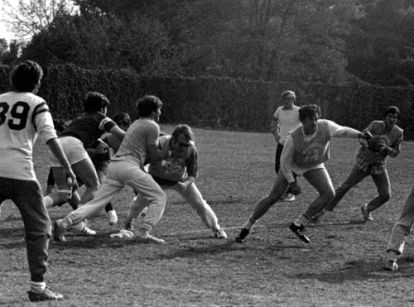
An annual Virginia Law Weekly-Virginia Law Review game often concluded with a self-congratulatory article about the Weekly's win.
Members of the staff were also gleefully glib in their reporting of recreational sports, including “Mad Bowl” football. Law Weekly and Virginia Law Review staff faced off annually at the Madison Bowl, a playing field across from the Fralin Art Museum.
Faculty served as referees, including future U.S. Supreme Court Justice Antonin Scalia for a 38-0 Law Weekly triumph in 1970.
Neither team took the games seriously, Hackworth recalled, and coverage was conspicuously one-sided: “Law Weakly Machine Crushes Revue in Tie Game,” the paper reported in November 1972.
The humor would find its way to the new location, Dunmire recalled.
“The paper consistently referred to the rest of the University as the ‘South Grounds,’ in response to the annoying practice of referring to the area occupied by the Law School, Business School and [Judge Advocate General’s Legal Center and School] as the North Grounds,” she said. “We referred to the Law School as ‘No-Name Hall,’ until it was renamed ‘EDIFICE LEX’ by the winner of the Law Weekly’s first annual ‘Name That Building’ contest.”

Editorial staff for the 2018-19 Virginia Law Weekly: David Ranzini ‘20, Jansen VanderMeulen ‘19, Taylor Elicegui ‘20, Alison Malkowski ‘19, Katherine Mann ‘19 and M. Eleanor Schmalzl ‘20. Photo by Kolleen Gladden ’21
Today’s Edition
For current Editor-in-Chief Jansen VanderMeulen ’19, this year means showcasing 70 years of history at the Law School. A historical editor has been finding articles of interest from the past to re-publish.
“For decades, the Law Weekly published scholarly columns from law faculty and scholars around the country—indeed, that was its central purpose,” VanderMeulen said. “As secondary journals arose and the desire to publish law review-like scholarship in a weekly periodical diminished, the paper shifted its tone and point of view to cover the week-to-week happenings at UVA Law.”
This doesn’t mean ignoring important legal news, VanderMeulen said, but instead giving more space to humorous features. For example, “Around North Grounds” lists editors’ musings, and the staff takes a Supreme Court-style stab at resolving Law School disputes with its “Court of Petty Appeals.”
“Members of the Law School community can go anywhere to get news on the latest law firm salary wars,” he said. “Only in the pages of the Law Weekly can they find news, commentary and satire specific to the UVA Law community.”
And just like old times, the Law Weekly is coming off yet another ABA law school newspaper of the year award, its second in a row and 28th overall in all categories and placings.
“As long as members of the Law School community keep picking up our papers, we’ll keep publishing them,” VanderMeulen said.
—Eric Williamson contributed to this report.



